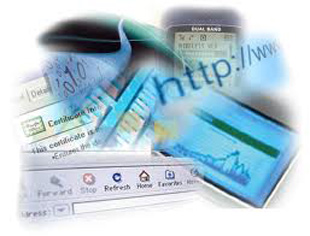| |
| European research behind the Future Internet |
 |
In the context of "Future Internet week" hold in Budapest last May, the European Commission was reviewing the progress of some 140 "Future Internet" research projects which it supports.
EU-funded research aims to make the Internet of the future a dynamic place for innovation, growth and jobs. Currently, Internet connects over 1.5 billion people and billions of objects are expected to get connected tomorrow. Building on this existing EU-funded research, a 600 million "Future Internet" Public-Private Partnership was launched on 3rd May 2011 to develop new ways of building better services and improving business innovation for the Future Internet. |
| |
EU-funded flagship research projects in the field of the Future Internet include:
- 2020 3D MEDIA: creating a 3D value chain in the entertainment industry.
This project researches how technology can become interoperable to capture, produce, distribute and display three dimensional (3D) sound and images and create a more cost-efficient value chain as the 3D industry expands. The delivery of more and more 3D services via the Internet on mobile phones or on TV will influence how the future Internet is designed. Film has so far been the driving force for the entertainment industry, setting the standards of quality and feeding the distribution chains of other media (broadcast TV, cable and satellite channels, DVD, video, games, mobile phones, etc.).
The project is carried out by industry, universities and research centres in Austria, Belgium, France, Germany, Italy, The Netherlands, Spain and the United Kingdom. It is funded by the EU's Seventh Framework Programme with 9.8 million. It started in February 2008 and was finished in March 2011.
More information:
http://www.20203dmedia.eu/
- SENSEI: integrating the physical world into the digital world
The SENSEI project researches how the physical world can be integrated into the digital world. SENSEI creates an open business-driven IT architecture that addresses how globally distributed sensing devices (e.g. public transport sensors) deal with the problem of handling increasing data traffic. "Smart places" can be created by connecting the real and the digital worlds. For instance, by connecting to the Internet some wireless sensors placed on buses, car-poolers can receive a text message when there is a bus nearby, which could get them to their destination more quickly.
The SENSEI system also aims to make existing infrastructure like healthcare systems, energy grids or traffic management 'smart' by integrating their data in innovative applications that can create valuable information for users.
The project is carried out by industry, universities and research centres in Finland, France, Germany, Italy, Ireland, The Netherlands, Norway, Republic of Serbia, Romania, Spain, Sweden, Switzerland and the United Kingdom. It is funded by the EU's Seventh Framework Programme with 14.9 million (total project cost of 23.2 million). It started in January 2008 and was finished in December 2010.
More information:
http://www.ict-sensei.org/index.php
- Internet of Things Architecture: bringing science-fiction into our lives
The Internet of Things (IOT) Architecture project researches how computers, objects and people can connect to the Internet in an open and standardised way while safeguarding privacy and security. Today, different devices and objects communicate via different means (e.g. smart tags (Radio Frequency Identification Devices RFID) and smart sensors) that do not necessarily support interoperability. Separate data systems can only deal with a limited amount of data growth and inadequately protect privacy and security. This jigsaw puzzle of systems could slow down global solutions for the future Internet of Things.
The Internet of Things Architecture model researches how the Future Internet, i.e. smart homes, intelligent transport systems, health-monitoring systems and logistics and retail businesses, can co-exist on one standardised platform to turn data into information. At the same time, privacy and security measures can be better incorporated in the design of these innovative technologies to safeguard the personal data of users. A first version of the European IoT Architecture will be presented during the "IOT Week" from 6-9th June 2011 in Barcelona.
The project is carried out by industry, universities, research centres in Belgium, France, Germany, Greece, Italy, Spain, Switzerland and the United Kingdom.
It is funded by the EU's Seventh Framework Programme with 11.9 million (total project cost of 18.7 million). It started in September 2010 and is expected to be finished in August 2013.
More information:
http://www.iot-a.eu/public
|
| |
|
More information about the Future Internet:
|
| |
|
|

